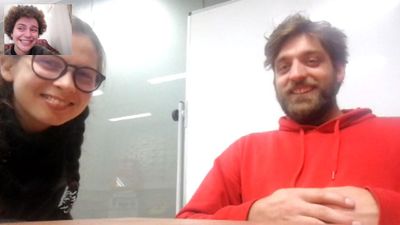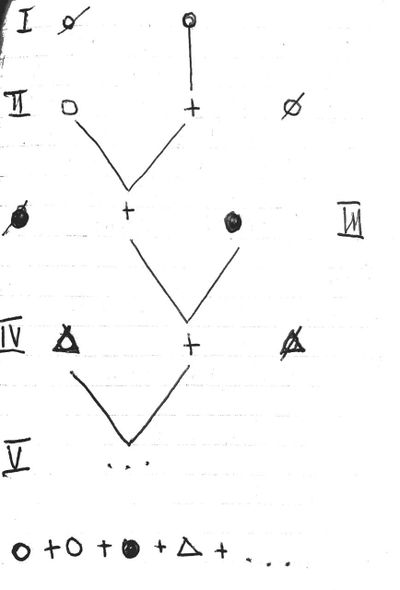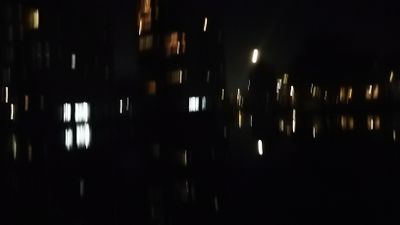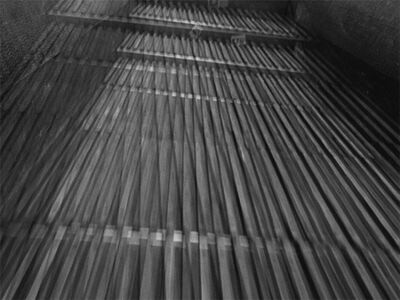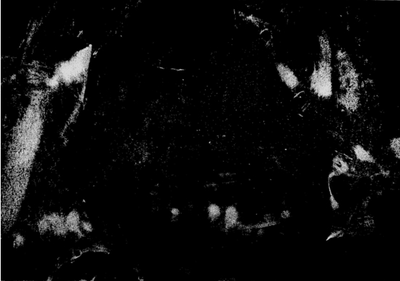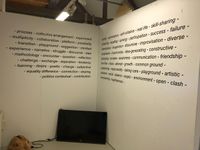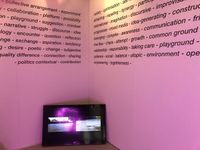User:Tisa/pending
Projects in becoming
After finishing my bachelor thesis (september 2019) that encompassed all my thoughts and systems of thinking, it is time for me to continue. The construction of my further research and actions seems somehow more complex, as I have in the past year deeply rationalized all the previous works, that were before constructed more intuitively and reactionary to the occurences I had noticed in my surroundings. Now, I am searching for a new tactic to employ - one that would take into consideration everything already figured out and start from the position of knowledge and insight that I hold now, in this very moment, invisioning a future fold-out and reconfiguring my mission that does not have to be so basic anymore, but I also have no idea where it will take me. Continuity, decisiveness and focus are cruicial.
Who cares?
This series of discursive gatherings has already been running in Ljubljana over 4 months in 2018. The conceptualization of it was also a part of my BA thesis (together with four other works).
Weekly. Nice space. 4+ hours of focused conversation. Inclusivity of personalities, opinions. Collective articulation. A place to express ideas or doubts or concepts or thoughts. Personal approach - demystifying praxis.
Now searching for a group of people (does not have to be static/fixed) and a place for it. (Maybe the PZI FA space > contact #todo k.a.briggs@hr.nl)
translate #todo:
Serija diskurzivnih dogodkov
Časovni okvir: tedensko v času štirih mesecev; od aprila do julija 2018
Kraj: Modri kot, Avtonomna tovarna Rog, Ljubljana
Koga briga? je diskurzivni dogodek, ki sem ga pobudila tedensko v času od aprila do julija 2018 v Modrem kotu, prostoru v Avtonomni tovarni Rog. Zastavljen je bil kot odprt prostor, ki je v okviru tedenskega srečanja omogočil rahlo mediirano komunikacijo med različnimi posamezniki, ljudmi z vseh vetrov in strok. Večinoma so bili to umetniki, pridružili pa so se tudi filozofi, znanstveniki in drugi. Vsakič nas je bilo vsaj pet, mnogokrat pa je število prisotnih preseglo stranice mize, za katero smo sedeli. V dolgotrajnem obstajanju Koga briga? se je zelo organsko gradila skupnost razmišljujočih in dejavnih ljudi, ki se je medsebojno podpirala na osebnem in profesionalnem nivoju. Ideja za cikel teh dogodkov se je porodila iz občutka, da v našem okolju ni prostora-časa, ki bi omogočal prosto artikulacijo individualnih refleksij, komunikacijo med različnimi strokami in ki bi spodbujal odprtost razmišljanj, skupno motrenje in postopno konstrukcijo politične pozicije do sveta, z rabo referenčnosti sodobne umetnosti. Preko eksperimentalnega pristopa do diskurzivnosti, komunikacije so se vzpostavili sočasni metarazmisleki o metodologijah izmenjave, iskali so se pristopi do učinkovite diskurzivnosti ter vključevanja, inkluzije vseh prisotnih, tudi tistih, ki po naravi niso zgovorni ali rojeni retoriki. To pomeni, da se je posameznikom dajal čas za izražanje, da smo ozaveščali manirizme diskurzivnosti, opozarjali močne govorce, naj predajajo besedo tudi drugim, skoraj prepovedali skakanje v besedo in stremeli k učinkoviti, prijetni komunikaciji med prisotnimi. Govorili smo večinoma v angleščini, saj so bili vedno prisotni tudi ljudje, ki jim je bila slovenščina tuja. Najbolj značilna metodologija Koga briga? je bil način, na katerega smo se predstavljali drug drugemu. Ob začetku vsakega dogodka smo se, tudi če smo se poznali, zaporedno predstavili, vsakič drugače, in med seboj delili informacije o nas samih. Prav tako se je to zgodilo vselej, kadar je v pogovor vstopil nov udeleženec. To je bil način, da med seboj vzpostavimo neko raven poznanosti, domačnosti. Koga briga? je omogočal varno, sprejemajoče okolje, v katerem smo lahko brez sodb govorili o sebi z lastnih individualnih pozicij in perspektiv. Poglobljeno smo se sprehajali po topiki s13 področja umetnosti, govorili o lastnih praksah, o okolju, ki nas obdaja, o spremembah v našem kontekstu ter o naših reakcijah nanje v medijih umetnosti in vsakdanjega življenja. Govorili smo o človeku, umetniku in načinih, na katere lahko ta človek obstaja in deluje v okolju, ki je vedno bolj sovražno in omejujoče. Govorili smo o načinih mišljenja sedanjosti in prihodnosti nas, našega lokalnega okolja in globalne scene. Govorili smo o stvareh, ki so na vse močno učinkovale ter bi jih bilo nesmiselno artikulirati v post-dogodkovni zapis, saj so v polnosti lahko obstajale le kot živo tkivo večurne debate, kreacije vseh prisotnih. Pogovore sem dokumentirala preko skopih linearnih zapiskov, ki jih hranim zase, saj je tovrstna dokumentacija enostranska in ne more predstavljati totalitete tega, kar je Koga briga? bil, še posebej njegove spremenljivosti, časovnosti in prijateljstev, ki so se stkala med dogodkom. V Prilogah (Priloga k 2.1.1) je vsakotedenski zapis, ki je vabil javnost, naj se pridruži Koga briga?. Vključene so refleksije nekaterih prisotnih z obrisi analize, ki je družna in mnogotera. Vsak prisotni razume in vrednoti Koga briga? po svoje. Tako na primer povedo, da je bil Koga briga? eden vse redkejših prostorov iskrenega skupnjevanja, da je odprl nedefiniran prostor, ki je nujen za nove in sveže misli, četudi so bile to le misli. Nekdo prizna, da je potreboval le “eskejp” (pobeg) in je v večerih, ki smo jih preživljali skupaj, najbolj cenil ravno relativno prijeten prostor in družbo, čeprav so se mu razprave zdele irelevantne, kar je bilo natančno to, kar je iskal. Koga briga? je vzbudil občutje, da imajo misli prostor in da je pomembno, da jih izrazimo.
"Death of the author"
needs a new title.
it is not anymore about "killing the author".
it is about finding ways to be a live collective thinking organism.
writing text together.
projected big.
using a pad, access from numerous points.
anonimity enables honesty.
inter-textuality.
performing the written.
real-time.
sound also made simultaneously.
a microphone passed around the room.
fluidity.
collective construction of metaphors and meaning.
no predispositions on content.
who knows what happens.
it will probably be fun.
This is briefly the outline. Imagine. Bunch of people, simultaneously together in a physical (Varia) and virtual (pad) space. Writing the "script", some sort of collective imagination, consciousness if you wish is being expressed in language. Performing it. Sound. Production of meaning otherwise. Thinking together out loud. Transgressing the individual. Because - edit me, make my meaning ours.
We've done this before (couple of years ago) in Modri kot (Blue corner), a place in the squatted Rog Factory in Ljubljana, Slovenia: my now-sadly-almost-extinct community. I'm proposing it to you, as an idea, searching for its continuation ...
(I forgot to mention that you can also take part in the writing if you are not in the space.)
> (sent a mail to Varia)
> This is the pad from november 2017 (in slovenian): https://totalism.org/smrt_avtorstvu
Clearer explanation of the idea
I would like to propose to make an evening event at Varia, open to public.
The evening could be from 20h to 00h, open bar if possible.
Concerning the date, I am open to your suggestions (maybe weekend is the most suitable?)
I would make sure that there are some people that start the engine of the evening (sound-makers, people that write, that perform the written), but all these roles are to be played by anyone that comes by. (The number of people is hard to predict.)
Technicalities: PA, projector, wifi. People bring computers/phones to access a pad.
Method: Collective writing (on a pad, projected big) that is performed in real-time (voice and sound). An improvised session. Encouraging everyone to join in the process. Like a literary evening, but not really. Content is unpredictable. From poetry to academic texts?
Why: I'm interested in this dynamics that happen when people write together. How meaning is constructed, changed. How unpredictable innovation happens, when we are not in our individual, isolated mode of creating. In my experience from before, these meetups were always a source of inspiration. And enjoyable.
It is about finding ways to be a live collective thinking organism.
Space
This is a collective process of articulating and [https://pad.xpub.nl/p/space1 collecting tactics] of being in (public) space, ran primarily by Tisa N. H., Ursa G., Blaz S. and Janja K.
The practice is fueled by the fast changes (turistification and gentrification) that we experience daily.
In order to reclaim the public space that belongs to us, we believe, we must become sensible to it. Here the tactics that we propose play a crucial part, a research tool. They are continuously being re-written and also performed/exercised/tried out by us and our friends.
We are thinking about ways on how to reach more people with the propositions of tactics, invite them to exercise them and improve them, gathering "pataphysical" & other subjectively sourced data (in the form of thought, concept, text, sound, photography, video etc). Reaching out (for now) happens within our circles of friends. The best way to make this practice public would be through conducting workshops, especially with already established groups (such as scouts, or crews of any kind).
The acquired data serves as a source of inspiration and relevancy for the construction of concrete responses - whether they are interventions in the public space, the way our interaction with it changes, a text or an artwork, a public talk, a collective activity or any other.
This project got some funding from the city of Ljubljana, Slovenia.
Meetings and working sessions are held via video, as we are ~1000km apart geographically, ~0km apart conceptually.
Composing sensibility workshop
Possible places:
- blank space, Almondestraat
- Ook huis
- Ubik
- ...
Got a place! DordselaanTheater!
I'm thinking about starting a weekly (2-3 hour) workshop for ~10 people.
Looking for a place, possibilities for funding and also people interested in taking part, shaping it further, giving propositions, offering skills, knowledge, ideas ...
This is the working description: Composing sensibility is a workshop, an exploration of our individual capacities (capabilities) of perception and a collective construction of tactics for the everyday. Believing that sensibility is the fist step towards understanding the world around us, social relations, occurrences, one should train it, include it into the daily routine and always pay attention to oneself, others and the surrounding context. In the workshop, I will propose a set of exercises (merged from sound and theater improvisation techniques, contemporary dance, meditation; based on movement, voice and text) that one can explore by themselves and collaboratively with others in any environment, at any time. The final outcome is a revalorization of senses and their potential. Emphasizing the possibility within each individual to interpret and eventually intervene in the existing state of affairs. Real-time sensibility is the first step, interpretation (awareness and understanding) is the second, reacting and intervening the third; all of them nurture the other and construct a fluid composition of everyday practice to be aware, present, critical, empowered, sensible as an individual subject that always moves in between communities and settings of multiple subjectivities.
The sessions would function as a setting of mutual support, collective learning, experimentation, and courage to sense and make sense.
sensibilization -> awareness -> understanding -> reacting -> change
Sound practice
solo
cTrL
Composition ideas
Reductive collective composition technique.
Can be programmed. But why? And in what way? What is the meaning of it, it's final goal? What does it tell about the world?
If programmed - it has to have a hardware "externality" - the input of the signals could be radio FM receiver:
- randomly selecting stations (for example 5s each, recorded)
- decision making
- implementation of the previous recording
- repetition of the protocol
- recovery
Fantasize on possible end results: Is it chaos? Is it conformity to the general sound parameters found in the mainstream? Does it go agains the mainstream completely - denying and contrasting it.
Improvisation and machines? It is not randomness. It is not chaos. How could improvisation protocols be "translated" into intuitive-machine learning processes? (Really? Call Dre or smth -> check meta, check 50?)
AIVA: "artificial intelligence composing emotional soundtrack".
Inda told me about this technique of composition - when you lack inspiration as a composer. You take three catchy refrains from known songs, transpose them all into the same key, and then shift around the notes, collage a little and here, you have a new catchy song.
Play this pattern
collect the material, choose the collaborators (human or machine?), write about it #todo
Post-production of experience
(Description written at RWRM session #1)
A SCULPTURE MADE OUT OF FOCUS
A sculpture made out of focus is a proposition on how to read my performances, a thought experiment. A protocol that is being generated on the basis of my immaterial performative practice and the nevertheless tangible strength of focus, the attention flow that is generated in between the performer and the public, that I observe cautiously and experience strongly. In real-time improvisation, focus is the prime matter for sculpting. The reflection, the analysis of it is also the basis for its future developments, rearticulations in other media, the postproduction of experience that the performances generate.
Following a question on how to make my performances more inclusive and interactive, I responded with a fact that has always been obvious to me - the public is already included, a crucially essential part of any performative act. The public is the one that grants the performer with focus and time, creating the very possibility for the encounter between content and the subjects, subjectivities present.
The world is contaminated. Visual pollution is the hypocritical, hidden and omnipresent germ. On daily basis we are confronted with the overflow of images that tend to be meaningless, or there to serve the consumerist system we are a part of. Trying to avoid the production of imagery that would worsen the visual pollution, I took the decision to divert my practice towards the performative, where consensuality is a precondition. The attention of the public is gifted to the performer, not stolen from them. Distraction is the basic tool of "the capitalist beast". I believe that the gifted, consensual attention holds a possibility to reach further into the subjective mind, suggesting and opening up perspectives, otherwise blocked by gleaming pollutants.
giro sensors, making a 3D drawing, that is created from the movements a performer/lecturer makes in real-time. 3D printing the parts of the content that seem crucial -> the listener chooses the emphasis.
ref: Brownian motion
Funny history, this thought around traces and their materialization has been present already in 2016, here's a mail I sent to my cousins: Gre se za sledenje in zapis nevidnega gibanja. Materializacija poti. Človek ves čas riše linije s svojimi premiki. Predstavljajta si, da bi tem premikom sledili (z gps in altitude merilci v prostorski dimenziji - mesto ali s senzorji/kamerami v prostorski dimenziji - soba). Podatki o poti in premikih bi se zbirali v real-time trodimenzionalnem grafu. Ki bi produciral unikatne, vsakemu akterju/subjektu specifične izdelke (risbe, kipe).
Zamislila sem si torej tri stopnje: 1. akterja, ki se giblje; 2. naprave, ki gibom sledijo; 3. vizualni prikaz izsledkov.
Prikaz bi lahko bil v virtualni obliki kot 3D risba, še bolje pa kot skulptura/kip/plastika. (žica, 3D print). Gre se za materializacijo neotipljivega in unikatnost premika.
In odgovor:
- https://en.wikipedia.org/wiki/Psychogeography
- https://en.wikipedia.org/wiki/D%C3%A9rive
- google location history
- OsmAnd
- če bi želela te sledi tiskat, bi rabila nekoga, ki ti iz verjetno .gpx formata pretvori v nekaj, kar se da tiskat.
Textuality & ...
Txt to speech with my own voice -> at Klankenbos I met Melia Roger who did smth like that for her thesis. here
performativity of text. performative lecture. poetry. Also my own sound/general art work. Where does it go?
Conceptuals
From the lack of abstract, metaphoric, conceptual exchange comes the urge to find possible channels of communicating ideas and reflections.
Why be ashamed of thoughts?
Channeling and making thoughts publicly accessible, by that entering the possible field of inter-exchanging and reflecting. By that letting conceptual loneliness behind, producing conversation.
Writings
freewriting practice
mission under construction
Correspondence
Email correspondence with Federico Pipia.
First email:
Hello Federico!
I finally got some time to get this correspondence started. Hopefully we get to bigger depths as we go along.
I. We were in a smokey, late night underground club, after some sessions at a conference of improvised music and a friend said: "But you know, we always improvise. Everything is an improvisation." This kind of hit me as a statement, a state of being. Especially a specific kind of awareness that one can have about reality, extending the notion of improvisation outwards. Honestly I was in a shock, my reality somehow assembled, all I did was laugh from this sudden epiphany, this thought being so familiar, as if I have had it before, but then forgot about it. How would you personally respond to this thought?
All for now. Did I start this right? Better one than many?
Response to the first email:
Ciao, I think it can be a good start since the question is in bold. So, First of all we need to understand what improvisation is not, and why we invented a concept like that, that basically is how normally human brain works: reaction to single or multiple events, chosen in real time in reference to a solid or liquid system of rules, in order to give or express significance. The point is that a system of rules can sometimes be too hard to handle in real time, and if we want to do things that are relatively too complex we need to write or decide them first. And this is what improvisation is not, something that is determinated a priori. For anthropological reasons, we need to learn to improvise in social relationships; in order to avoid a deepening on survival and evolution criteria in western society, we'll just say that it's not considered necessary to learn improvisation for non social contexts, like the musical one. But things are more complex: now that we ipotized what improvisation is and is not, let's take a look to the combinations. If we, for example, consider the etiquette of behaviour, we can see how strictly this "system of rules" can be; would we say that it's still improvisation? Well, we could: it has ethical (=aestetichal) rules for phisical and verbal languages in relation to the context, and moments of free improvisation during the dialogues to speak about certain topics in a more or less defined way. Doesn't it remind us anything? Like jazz standards for example?
What happened already
Maastunnel field recording
This is a field recording that archives the sounds of the Maastunnel (a tunnel under the river Nieuwe Maas in Rotterdam, NL) before being renovated in November 2019. I presume that after the renovation, these sounds will disappear, being exchanged for sleek, buzzing sounds of newer stairs. The sound is transient, the memory of it feels like a forgotten dream.
Posted on Soundcloud on the date the tunnel closes: 15/11/2019.
Listen here.
Radio session
11-10-2019, 1-3 am, Radio Tonka, den Haag I was invited to the Club Res radio show at Radio Tonka, hosted by Kassen Oud (whom I have met and interviewed at Dutch modular fest) and Rob Bothof. I interviewed them about their show (meta moment) and then we had an improvised session live on air. add #todo report & audio recordings (edited?)
Performance Obrazi
25-10-2019 Lust, Groningen w/Mojca Zupančič on drums, Filippo Temperini on bas guitar, effects and ableton, Tisa Neža Herlec on voice; Quentin Zero aka Michiel Teeuw and Livia Ribichini on analog visuals (light play)
pad, transcription of composition available here and #todo add the sound recording of the thursday after rehearsal and the performance.
cTrL+M
1-12-2019 4-uurtje, Rotterdam w/Lucija Gregov on cello, Mojca Zupančič on keyboards, Tisa Neža Herlec on voice.
describe #todo the process of rehearsals, add pictures/videos/sound recording.
Exhibition
Biennale of slovenian independant illustration
Kino Šiška, Ljubljana, Slovenia
21. 10. - 8. 11. 2019
temp.tc
- about temp.tc for the transborders exhibition.
temp.tc (temporary transborders collective) was a collective process that took part in the Transborders festival, from 18.8. to 1. 9. 2019. A group of 19 young artists that were invited by the three curators of the temp.tc (Nina Selina Kern, Vania Geier and Tisa Neža Herlec) inhabited the castle Cmurek, on the border between Slovenia and Austria. Creators of a manifold of diverse practices and approaches have joined forces in order to explore cohabitation and co-creation, collaboration in the time of predominant individualisation and alienation. Thinking collectively, communication was crucial, decision making joint. The intense process that we fostered was pet-named as Kunst Banda or Schloss Kinder. The form of temporary collectiveness that we have been striving for presented each individual the challenge to be empowered, to overcome their own personal boundaries (of intensity, stress, idea-sharing and even sanity) in order to construct a fluid structure of our everyday together. We were strongly influenced and inspired by our surroundings, the context that we have found ourselves situated in - the fragile border, the majestic river Mura, the castle, its complex history and its stories embedded in the walls. Improvisation, communication and collaboration were the principal strategies that we employed, simultaneously developing our own methodologies and forming friendships and creative connections that will, we believe, resonate in our future artistic pursuits. Completely submerged into the process and the context, we have created many works of art and strains of thought that were presented on the first day of September, as a performative exhibition-in-process that took visitors on the path inside the castle, catching glimpses of what temp.tc was and could be. We have not attempted to be productive as such, our attention was given mainly to the quality of our process of creation, shared and experienced by ourselves and others. temp.tc were: Anna Sophie Adelt, Aljoša Dakić, Evelina Hägglund, Armin Imamovic, Eirik Jahnsen, Sascha Knebel, Johannes Lakinger, Bernadette Laimbauer, Henna Nerg, Ljubica Petrović, Ksenija Tomić, Sonya Woodruff, Morten Yoo, Jonas Žabkar, Miriam Roithinger, Mascha Illich, Vania Geier, Nina Selina Kern and Tisa Neža Herlec.
- process - collective arrangement - experiment - multiplicity - collaboration - platform - possibility - transition - playground - suggestion - mindset - experience - narrative - struggle - discourse - idea - methodology - encounter - question - reflection - challenge - exchange - aspiration - tendency - desire - poetic - change - subjective - politics - contextual - contribution - artistic - patience - social - balance - utopic - environment - open - clash - empowering - togetherness - learning - equality - difference - connection - sharing - variety - optimisation - self-initiative - real life - skill-sharing - attracting - repelling - synergy - participation - success - failure - international - imagination - discursive - improvisation - diverse - progressive - mixed media - idea-generating - constructive - belonging - complex - awareness - communication - friendship - free flow - chaos - attempt - growth - common ground - relationship - responsibility - taking care - playground -
River
(Description written at RWRM session #1) River is an object, an artist book. A diary, written by the river itself, interspersed in 9 chapters. Loosely constructed, black duct tape is preventing it from falling apart. Each turn of the page unravels a block of hand-written text on the right, juxtaposed by a drawing, resembling the natural flow of water, peculiarly dried up and static on the left. While thumbing through the pages, the hands of the beholder get stained by the materials used.
From imagination into words, the personified river told her story fluently, without thinking twice, writing automatically. I didn’t have to do much, her stories have been present for centuries. Then big drawings, made out of natural materials such as charcoal, coffee grounds, soil, dirt and water were cut into equally small pieces. The wilted material opposing the fluid, ethereal subject matter. Bound together, it was put on display in a former mortuary, a place of memory.
The border river Mura served as my refuge for two weeks, while I was involved in a collective process temp.tc, somewhere in between Slovenia and Austria. Bathing in its waters, observing its ever-changing states and gradually becoming aware of its past, present and future - political denotations, the shifting roles the river plays, the human-made constructs imposed onto her. She was screaming to utter, without possessing language. I became the conductor of her content.
photos of the book here
text of the book here

